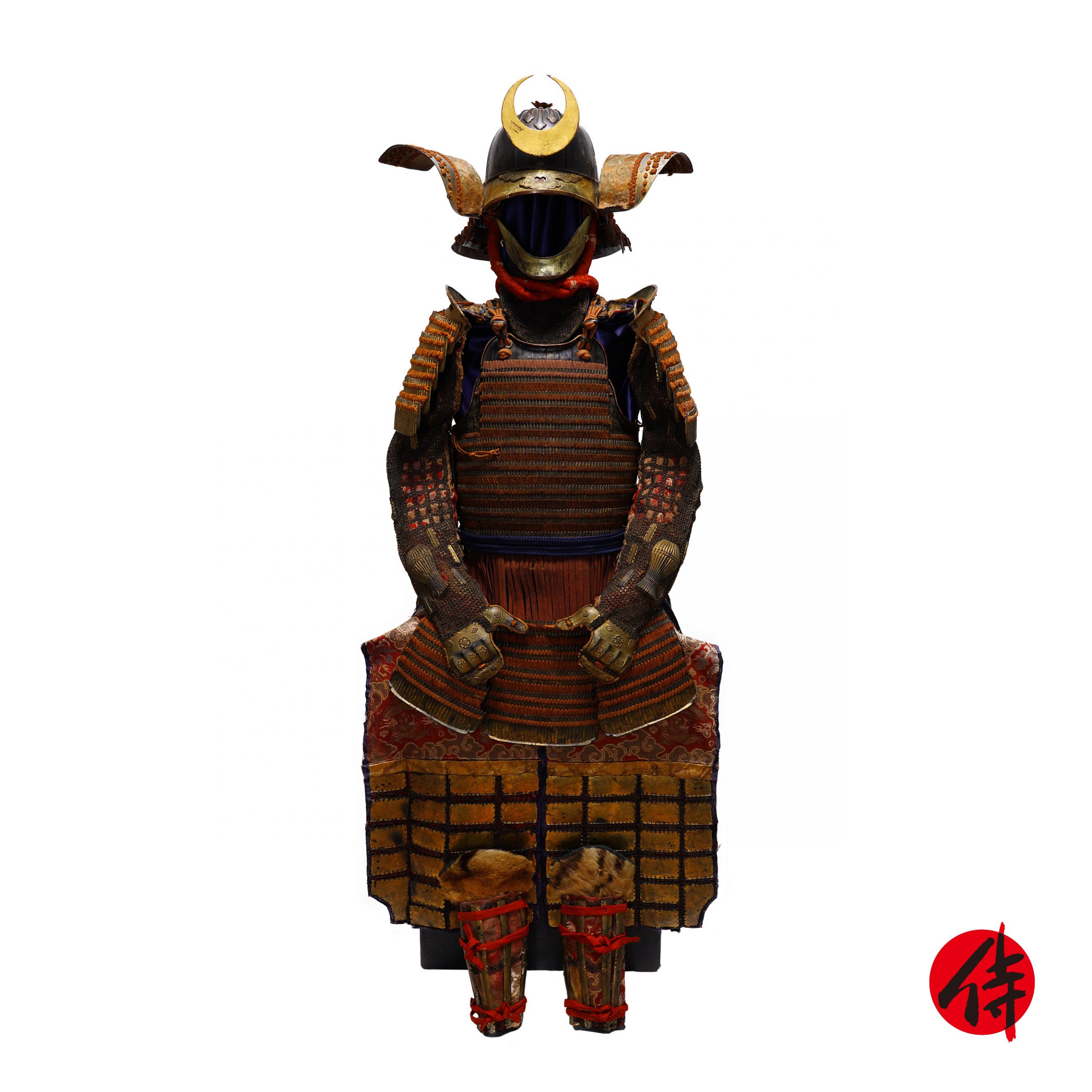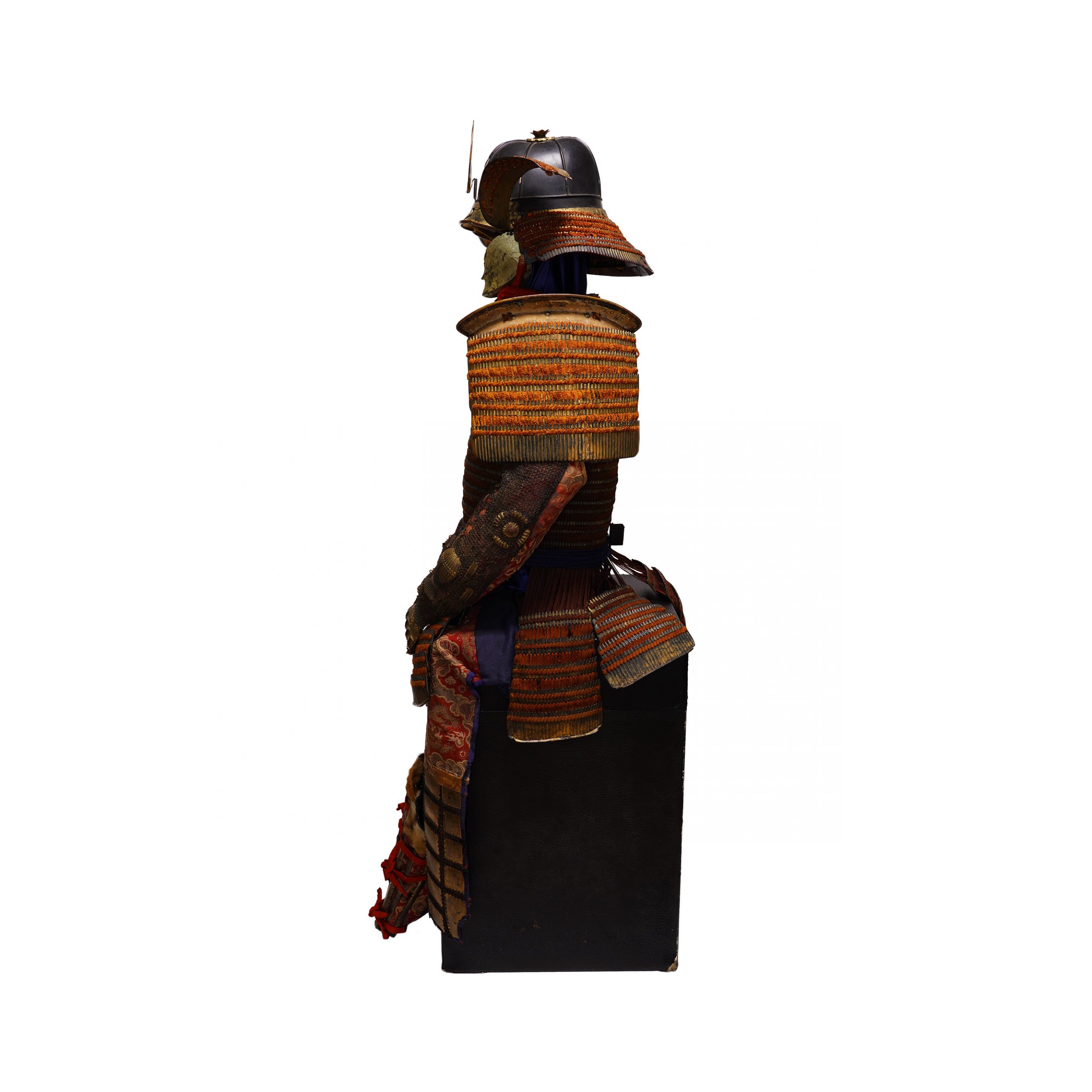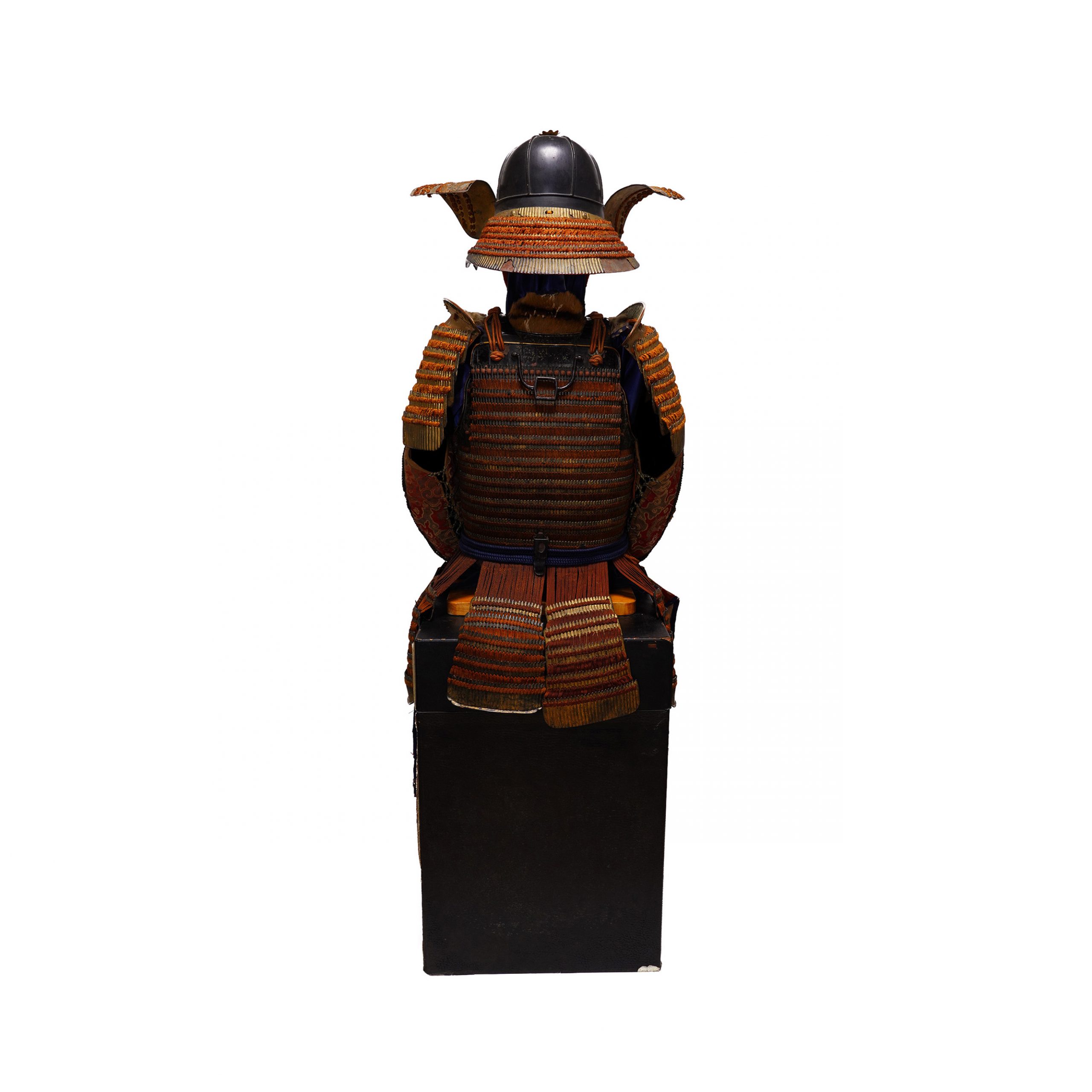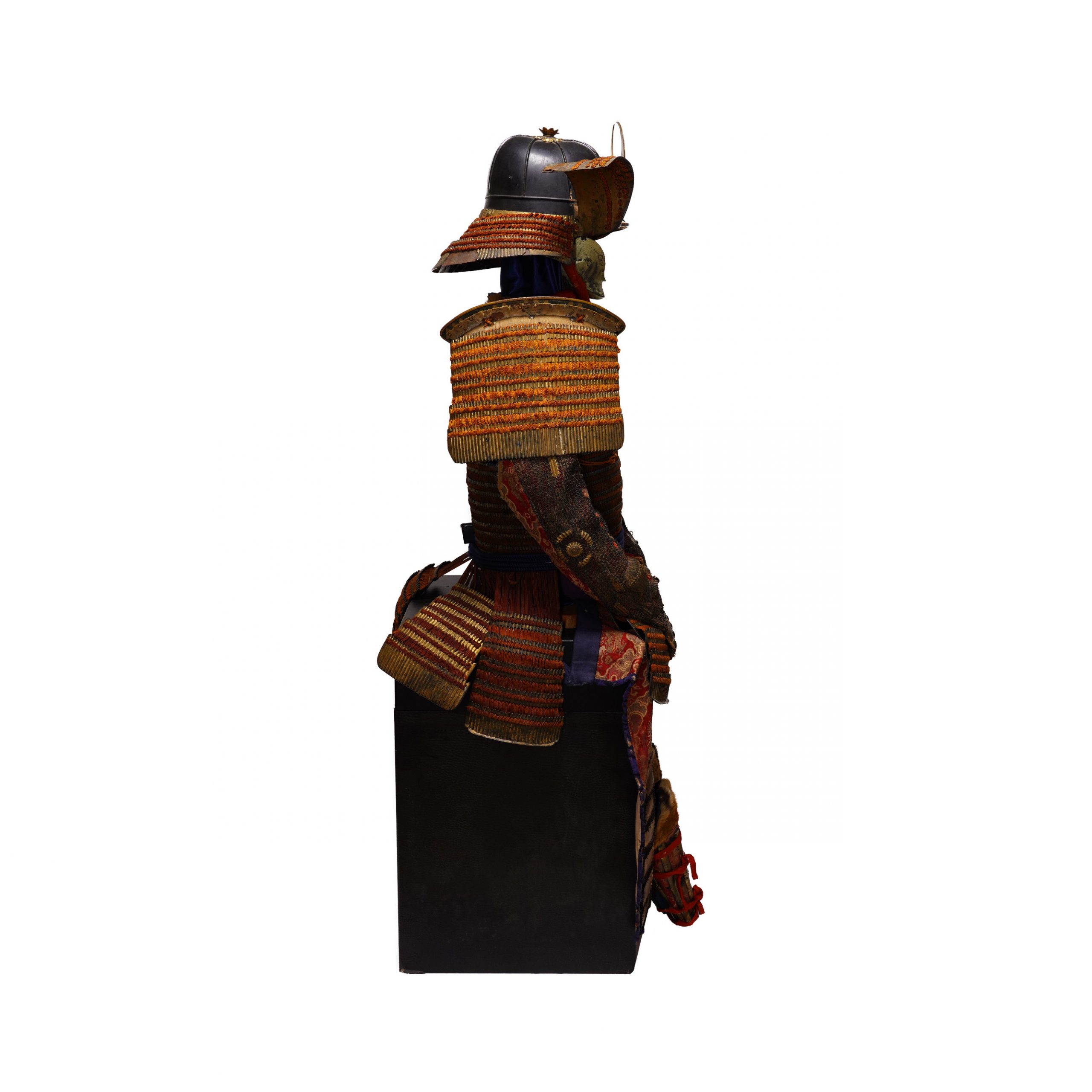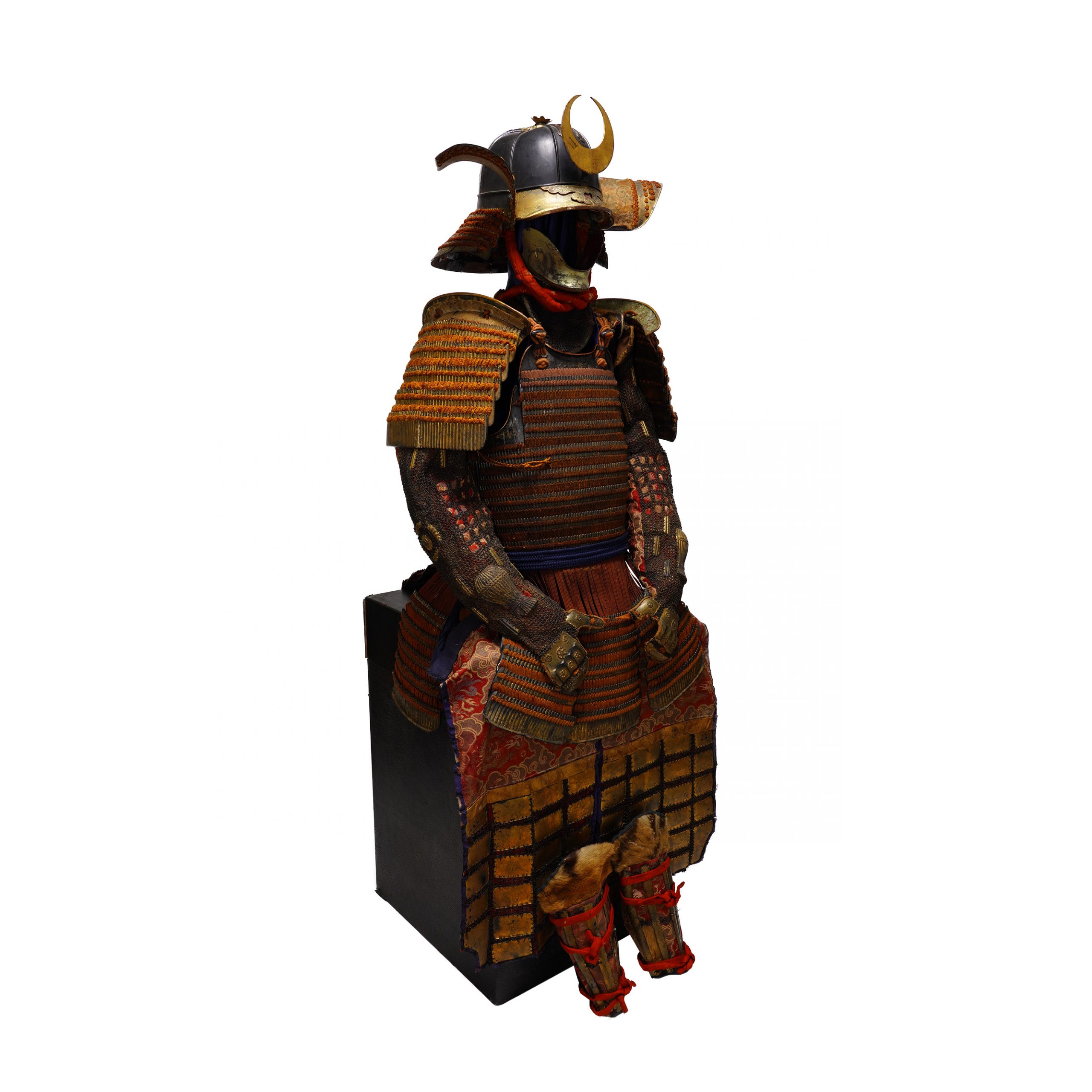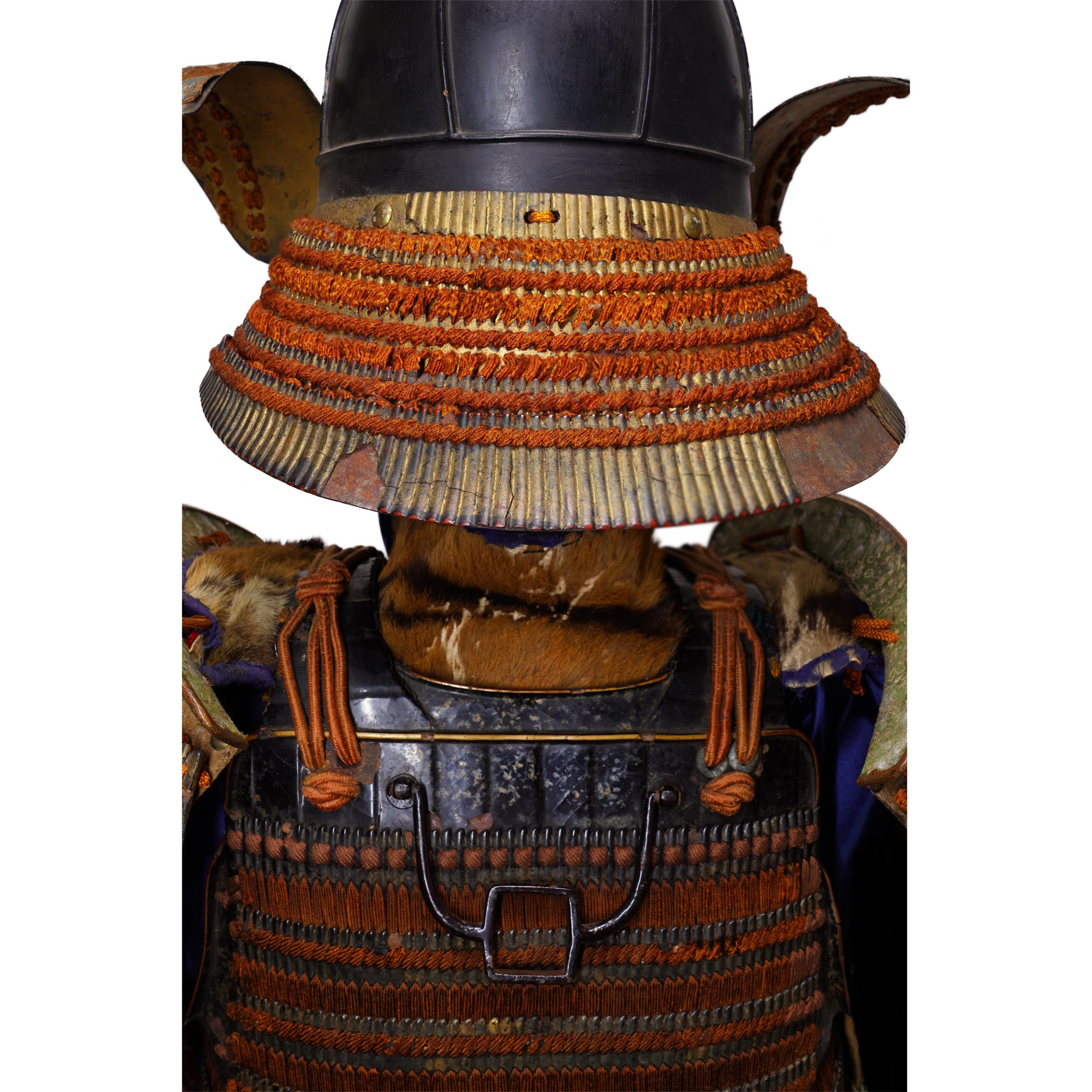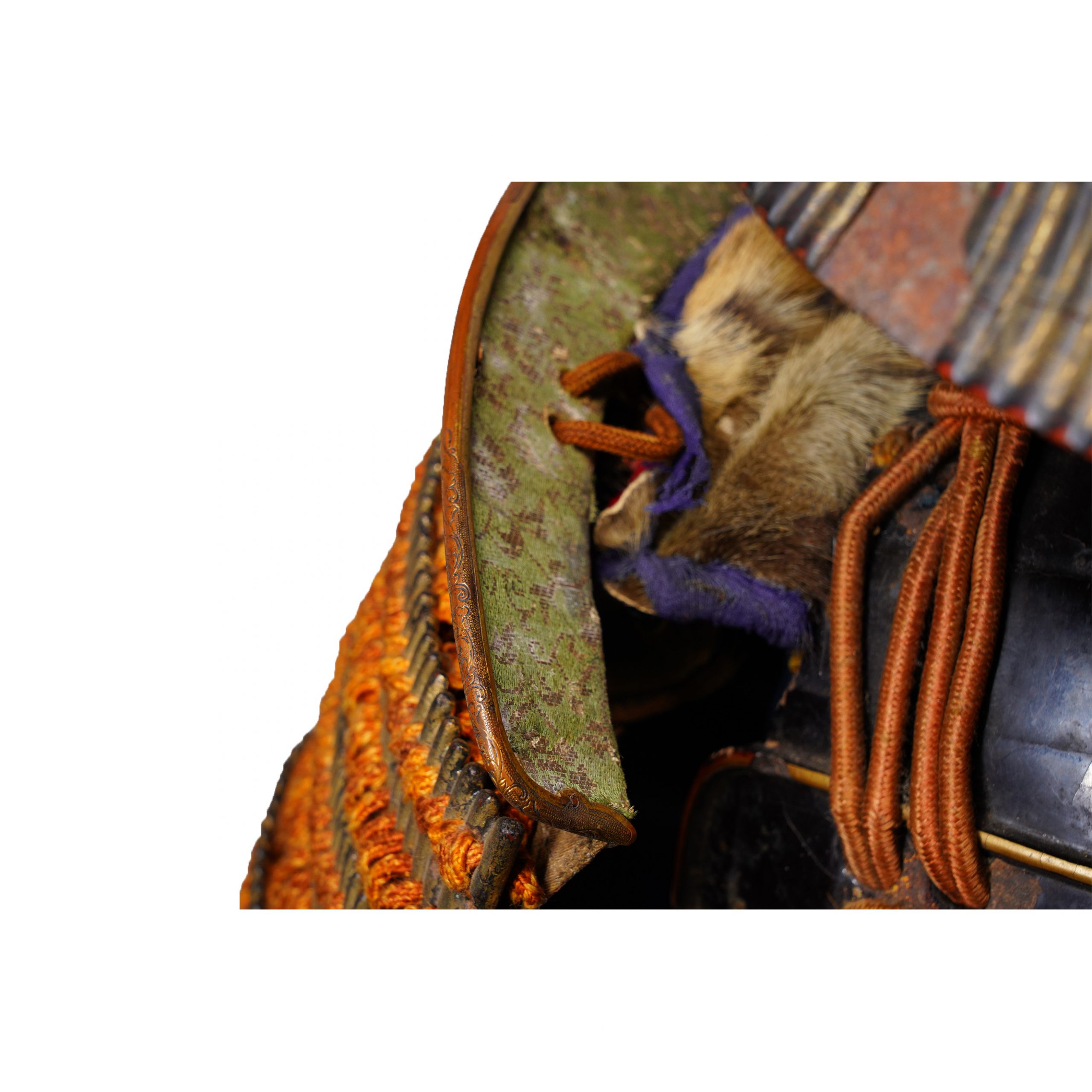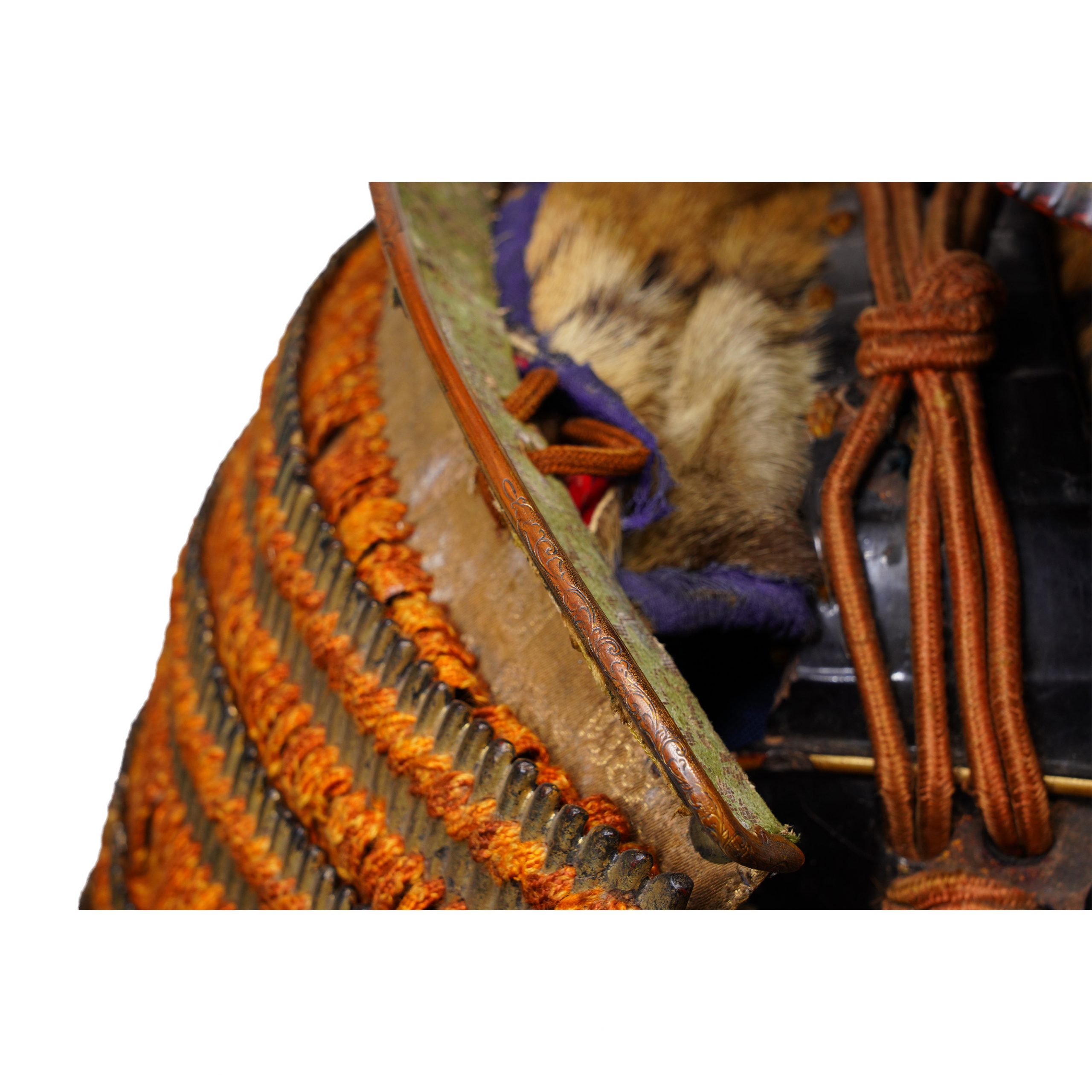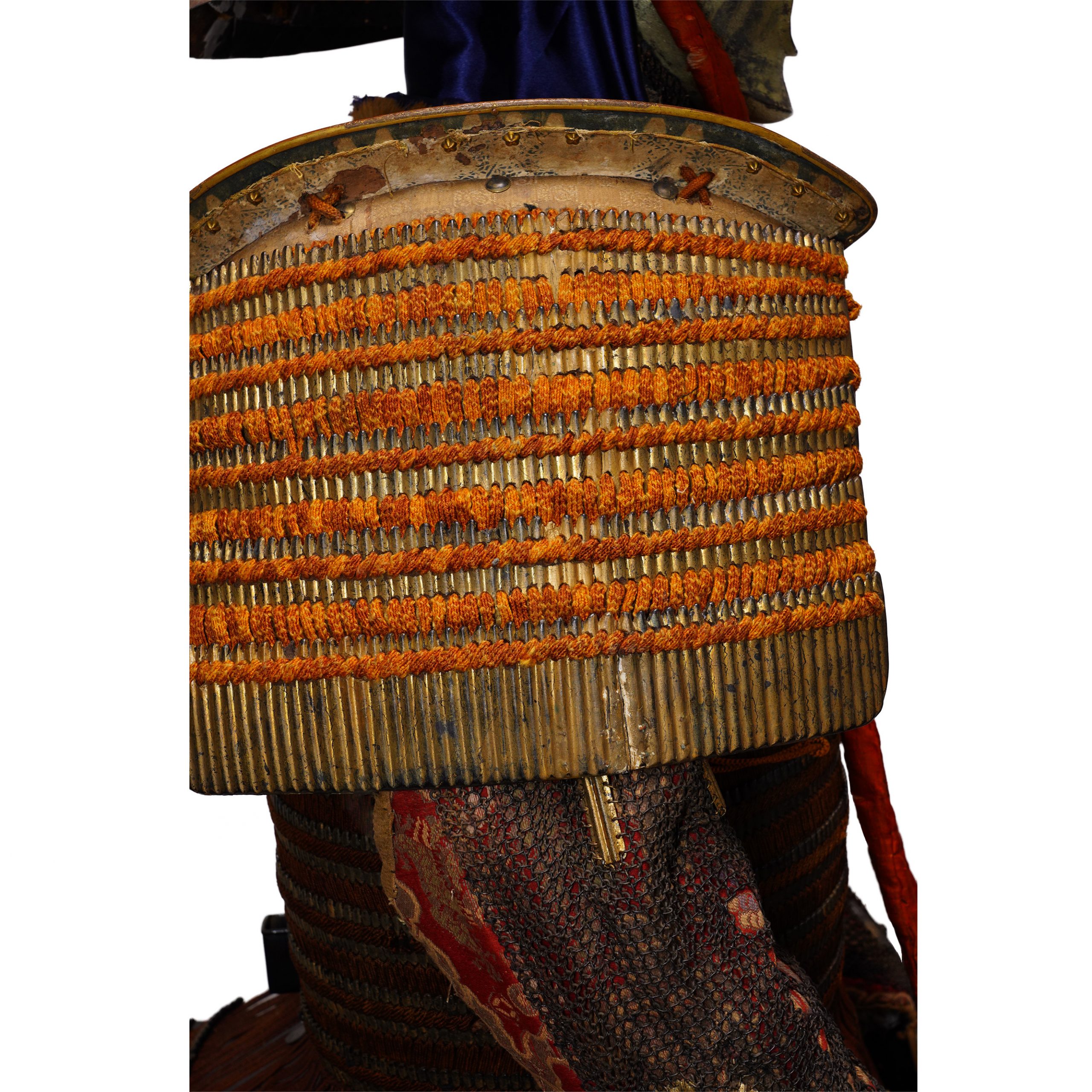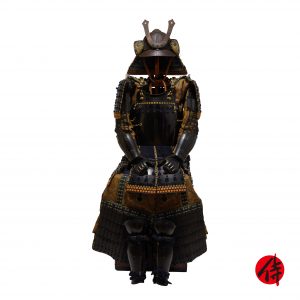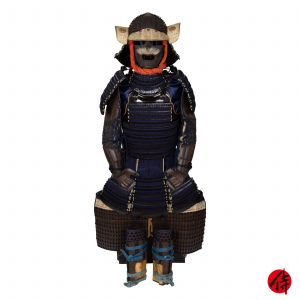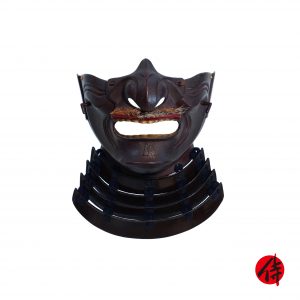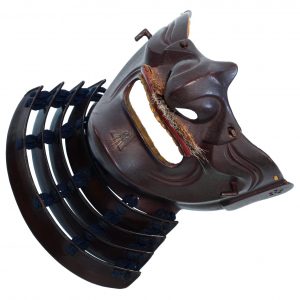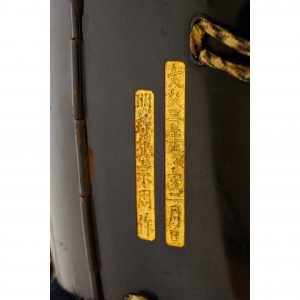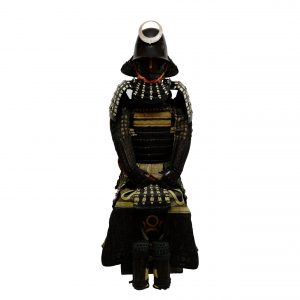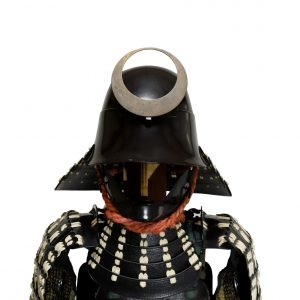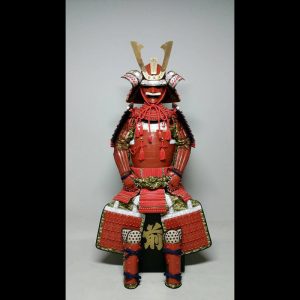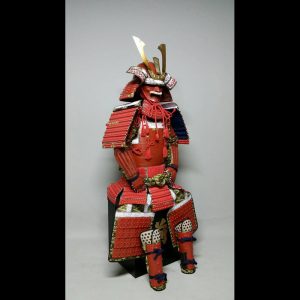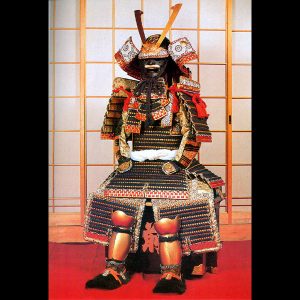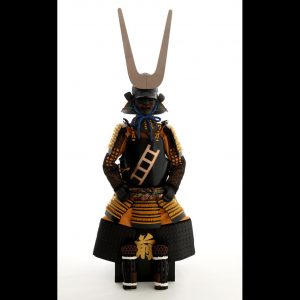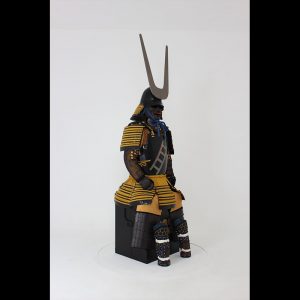Antique Early Edo Period Samurai Armor Tokubetsu Kicho Shiryo Certificate (A-19)
Period: Early Edo Period
appraised by The Association for the Research and Preservation of Japanese Helmets and Armor
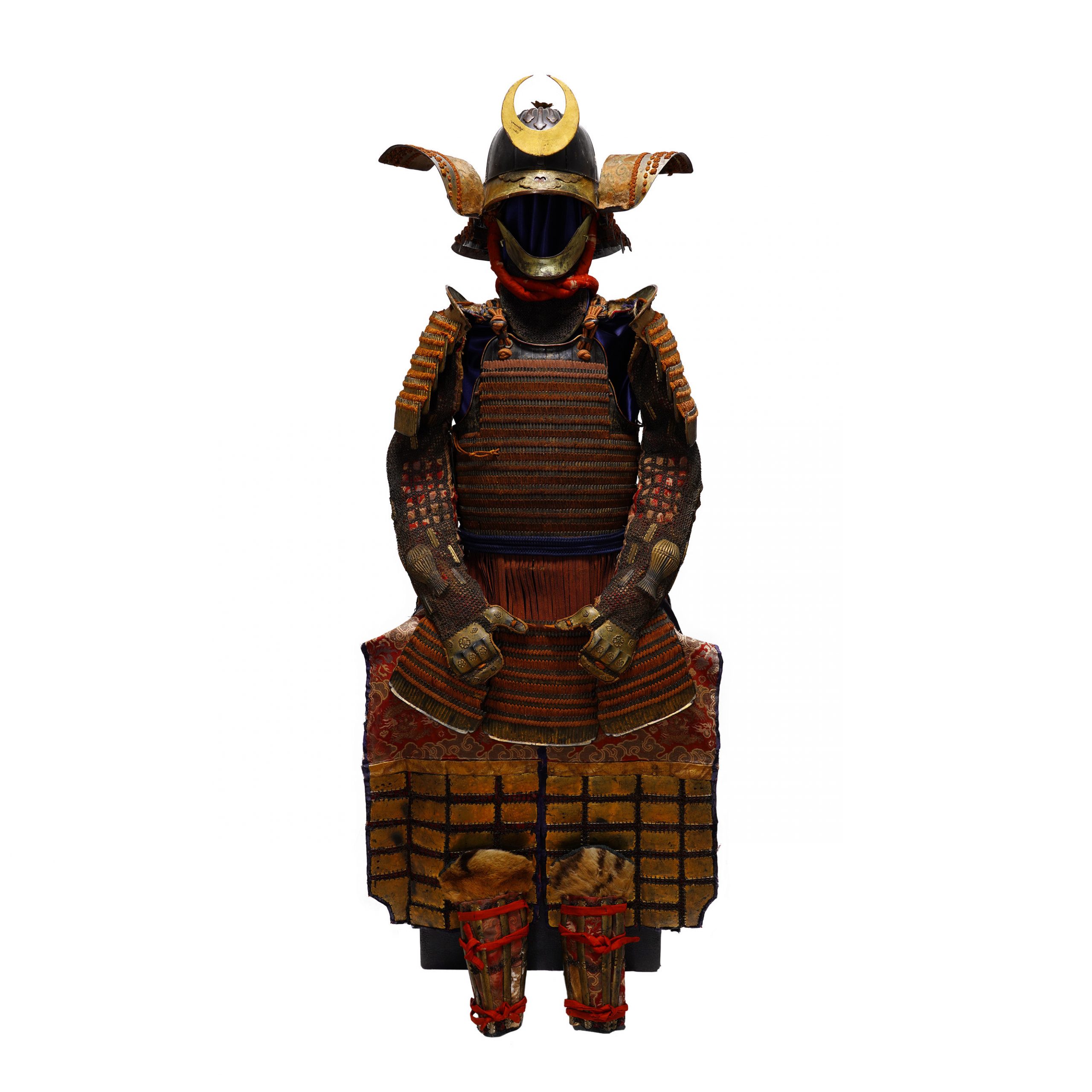

*As this item is an antique, please check each photo and ensure its condition.
Kabuto (helmet)
■Helmet bowl: Hachi Gen Suji Kabuto
The Kabuto (兜, helmet) is a protector for the head. When people started using the Kabuto, it was initially designed for practical use. However, the principal purpose of its design has changed with time; Samurai tried to express their dignity, personality, or religion by wearing the characteristic designed Kabutos. According to a theory, these unique designed Kabutos were made from the late Muromachi (1467-1573) period to the Edo (江戸, 1603-1868) period. This type of Kabuto is categorized as the Kawari Kabuto (変わり兜), and a variety of materials were used to create them. For example, animal fur, seashells, plants, and paper were used as materials for decoration.
Here we would like to introduce to you a little bit more about the history of Kabutos. Before the Kawari Kabuto’s production, the Suji Kabuto (筋兜) has appeared during the Nanbokuchou (南北朝, 1337-1392) period. At that time, the tactic was gradually changed from the piggyback fight style to battle with the Tachi (太刀) sword and the Naginata (薙刀, Japanese halberd) on the ground. Therefore, there was a rise in demand for the weight-saving of the Kabuto. Also, to turn the attack by swords, a new type of structure was invented: the Suji Kabuto. Its form slides swords’ attacks when weapons hit the Kabuto. It is said that the production of the Suji Kabuto prospered in the Muromachi period (室町, 1336-1573).
We estimate this Kabuto is one of these Suji Kabutos made in that tendency in the Edo period. As it has eight stripes (meaning eight iron plates are connected), it is categorized the Hachi Gen Suji Kabuto (八間筋兜). Hachi (八) means eight in Japanese. The surface is colored with black lacquer.
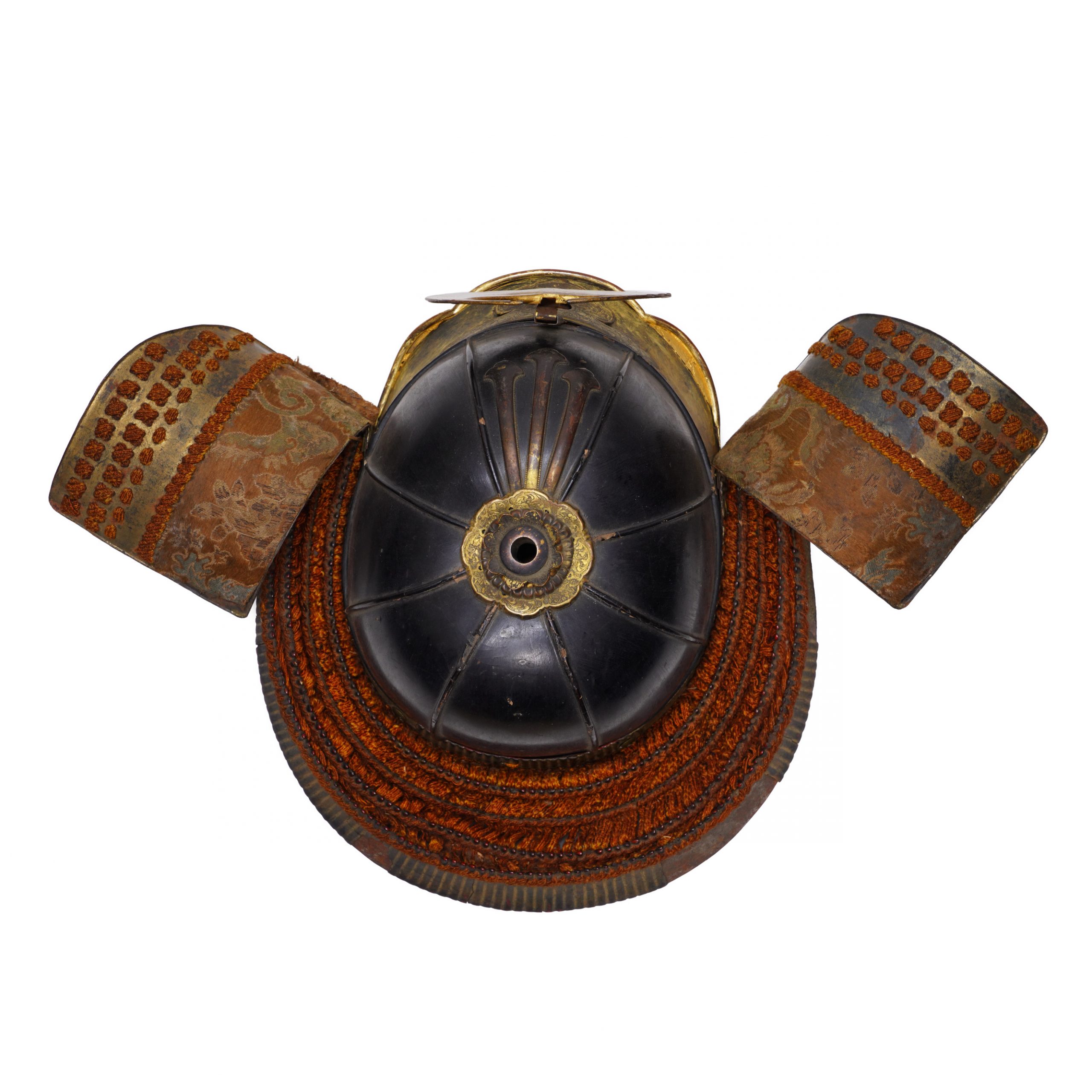
■Shikoro (side neck guard):
Gold-colored iron plates laced with orange color threads.
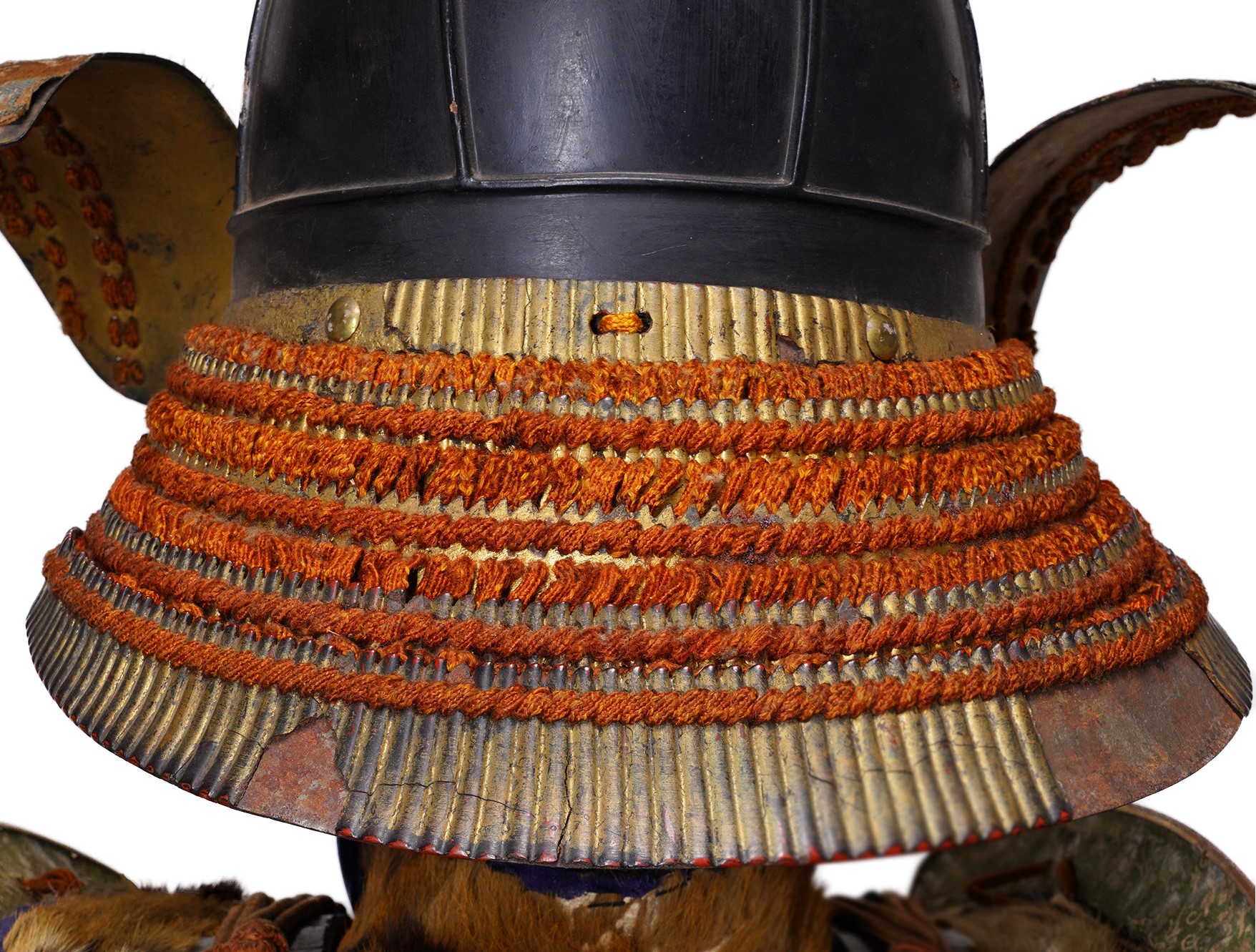
■Fukikaeshi (side neck guard):
The Fukikaeshi (吹き返し) is both ends of a helmet. It protects the face from swords and also shows its beautiful workmanship. Family crests are sometimes designed on this part. This Kabuto’s Fukikaeshi is larger than usual. It is awe-inspiring, and we imagine that its prominent figure gave a dignified atmosphere to its wearer.
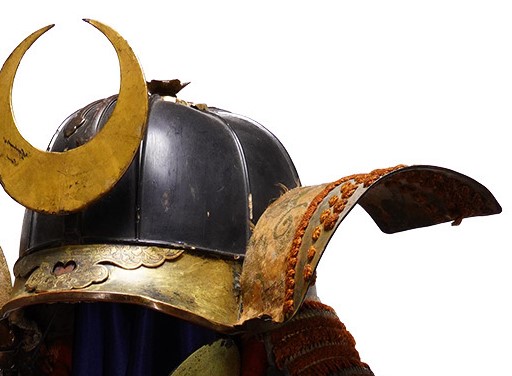
■Menpo (face guard): Gold-colored iron half mask
This type of half mask is called the Hanbō (半頬), and was popular as it was easy to breathe compared to the full mask that covers his nose.
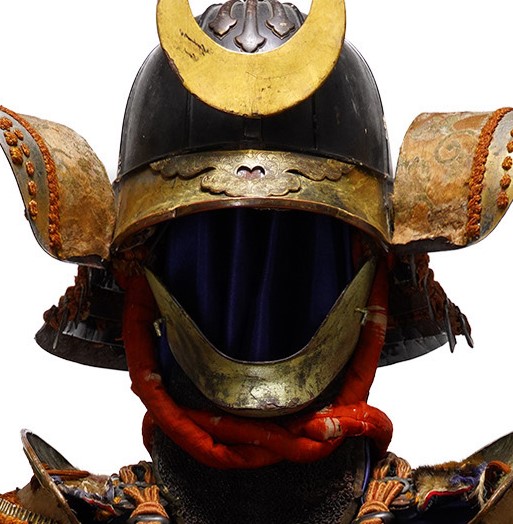
■Maedate (Front decoration): Mikaduki
The Maetate (前立, front decoration) of this helmet imitates a Mikaduki (三日月, crescent moon). We imagine that its golden color caught people’s eyes on the battlefields. According to a theory, the crescent moon design of the Maetate comes from the Myouken (妙見) belief. This religion was born in India. It was mixed with the Polestar belief and was brought to Japan from the continent. In the Myouken belief, the moon and stars were the symbols of faith. The Myouken Bosatsu (妙見菩薩, 菩薩 means Bodhisattva) fulfills all wishes such as fertility of rich harvest, peace, the prosperity of the clan, healing of illness, longevity, success in business, traffic safety, academic achievement, marriage, etcetera. Understandably, the moon motif for the Maetate was popular among Samurai. The former owner of this armor might have shown his faith by wearing this helmet.
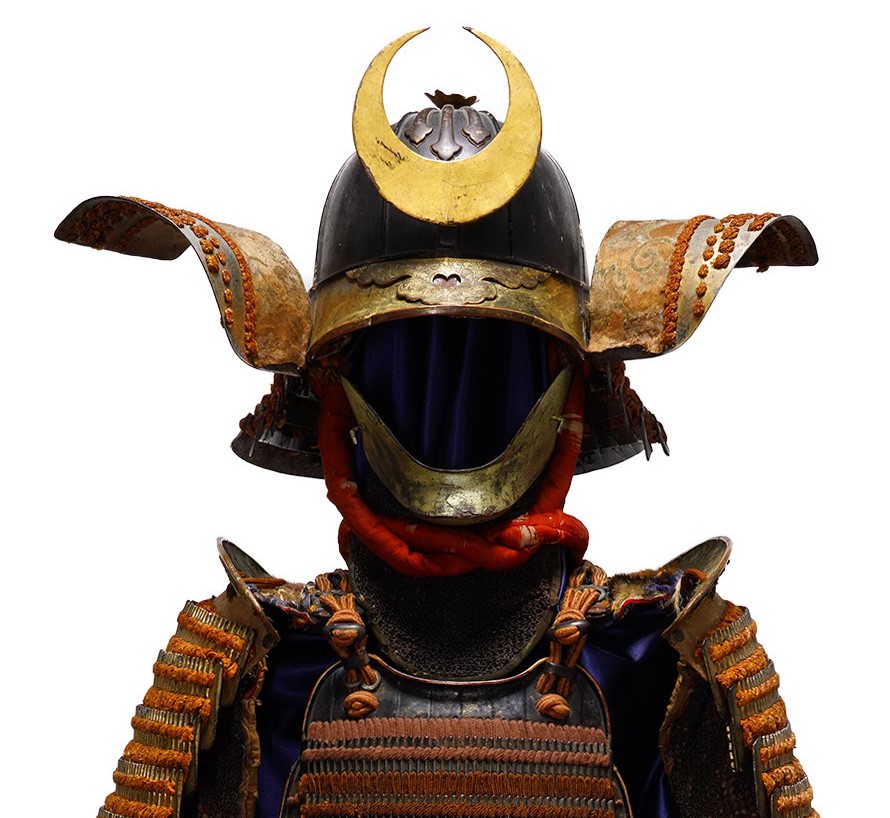
Armor
■Do (cuirass): Nimai Do
Nimai Do (二枚胴) is a kind of cuirass for Tousei Gusoku (当世具足, developed armor style). Nimai Do was named after the fact that Nimai means two plates, and Do (胴) means torso in Japanese. Instead of using a large number of small lamellar plates called Kozane (小札, strip of board), this cuirass used large rectangular shaped iron plates riveted.
The body armor part could be separated into two pieces and connected with a hinge. Typically, the hinge is located on the left side, and you can tighten this cuirass on the right side.
■Decoration on body armor:
■Kusazuri (skirt of plates attached to the cuirass):
Gold-colored iron Kusazuri laced with orange threads.
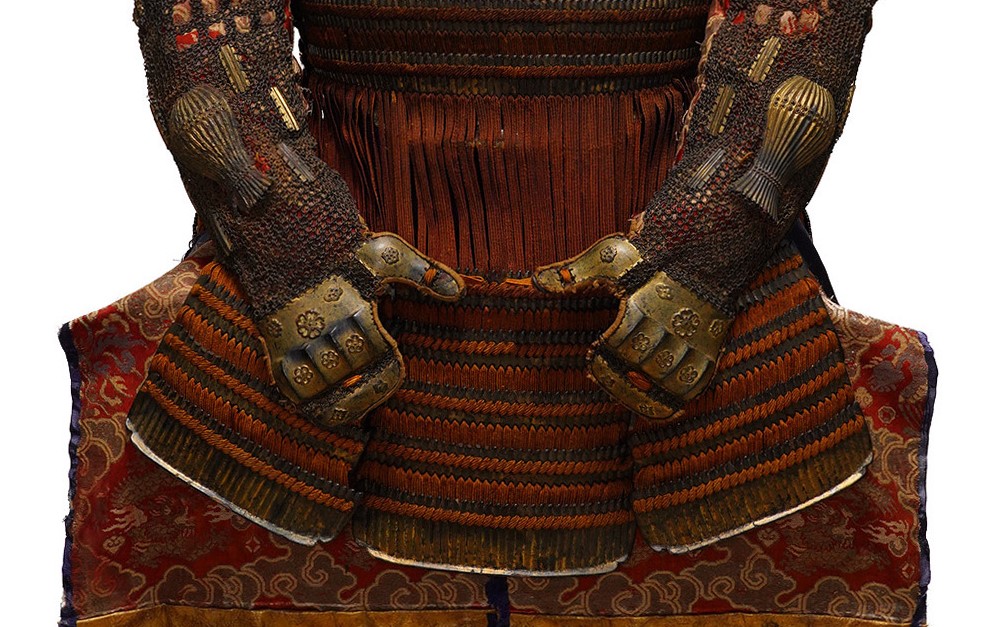
Small parts
■Kote (armored sleeves):
Intricate iron chain mail with silk.
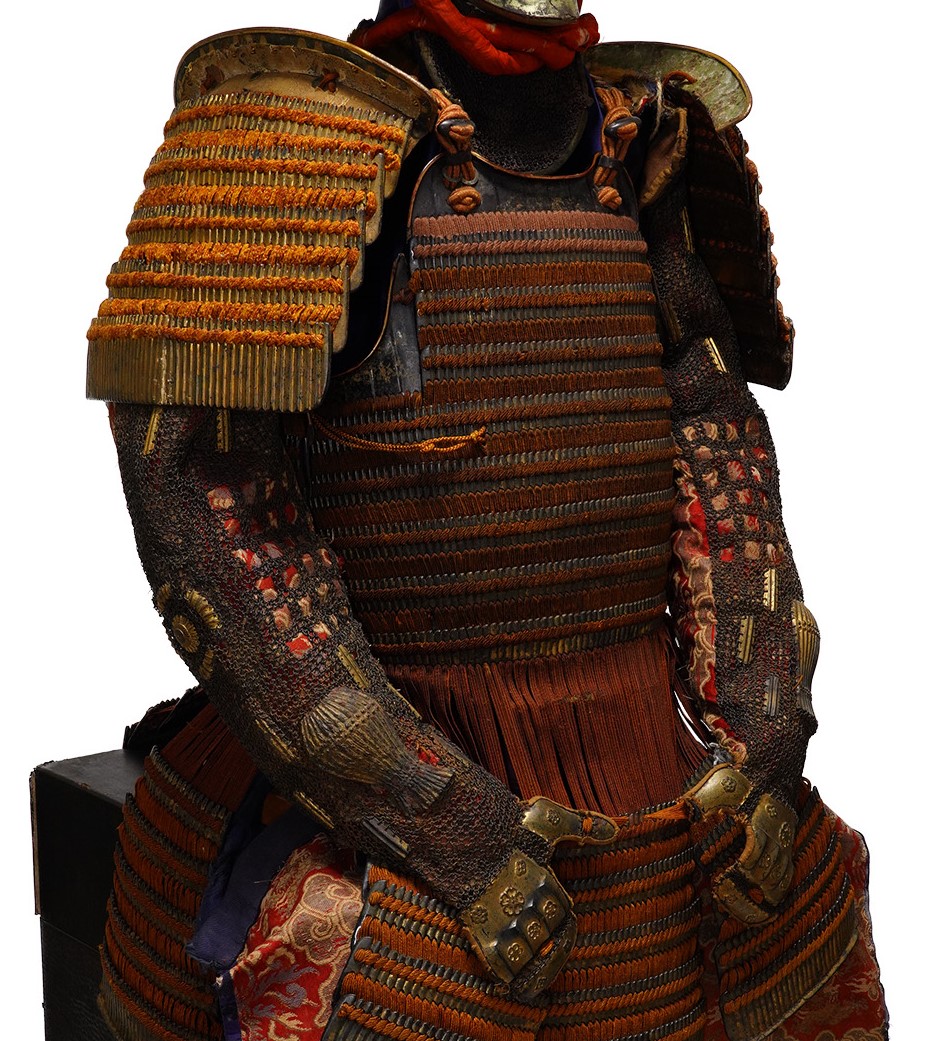

■Haidate (thigh protection):
The Haidate (佩楯) is a thigh guard. The cloth of this Haidate is decorated with a combination of dragons and cloud patterns. We assume this motif has been popular because of a belief in Japan. It worships the dragon as a water god. Since rice cultivation has flourished in this country, water is always an essential resource. Clouds bring blessed rain and snow, and their movements significantly affect the day’s weather. Due to its supernatural power, a theory says that gods, spirits, and dragons dwell in the clouds. We think this is because this combination design has been familiar to Japanese people for a long time.
Initially, the dragon was an imaginary creature found in ancient foreign traditions or myths. Furthermore, it is regarded as a symbolic beast of auspicious signs. Its body is likened to nine animals: antlers are deer, the head is a camel, eyes are demons, the neck is a snake, belly is the Mizuchi (蛟, a mythical animal in Japan that looks like a snake and has a horn and four legs), scales are fish, claws are falcons, palms are tigers, and ears are cows. It was thought that the dragon would reign at the top of all animals because of its odd-looking appearance.
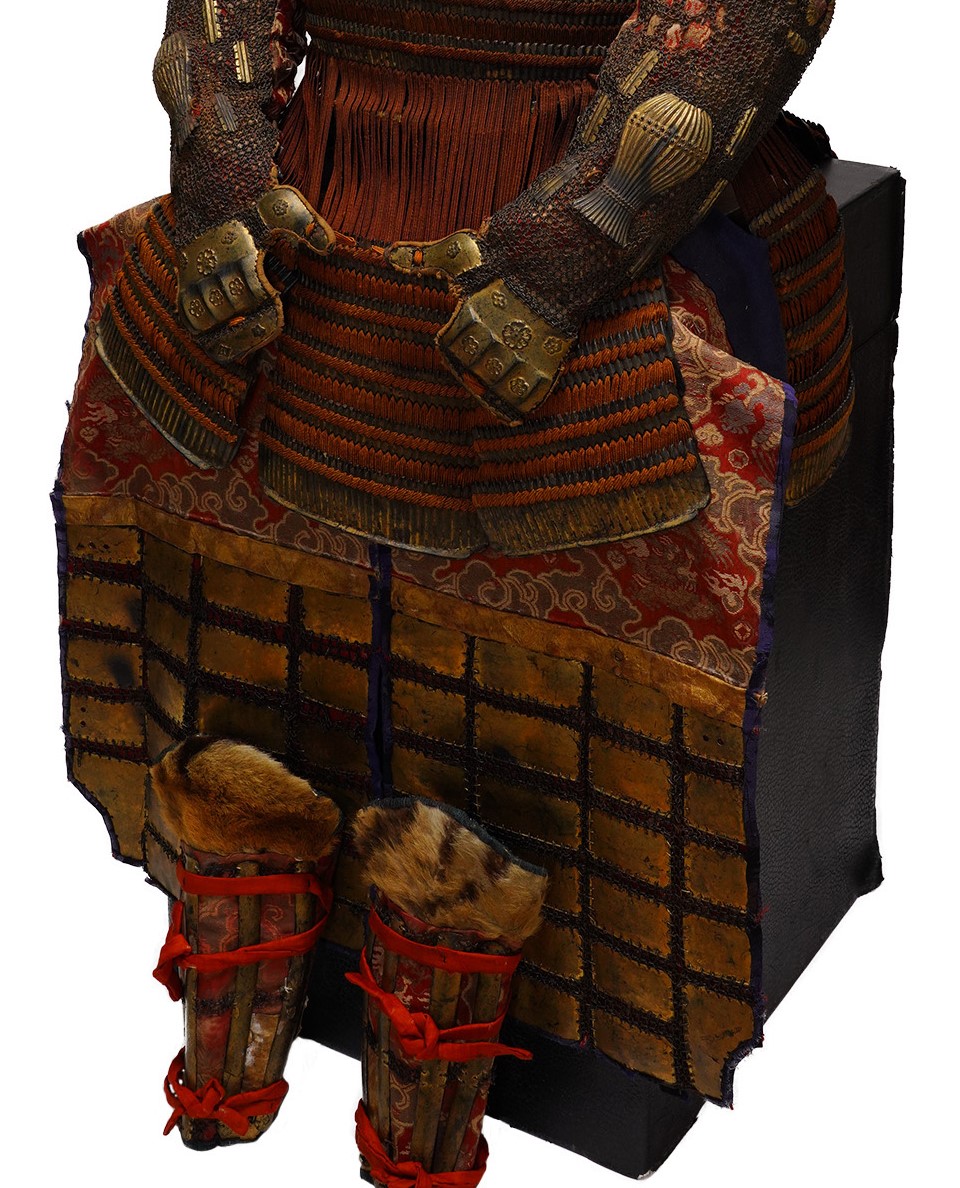
■Suneate (shin guard):
It seems the cloth of this Suneate (脛当) is the same as the Haidate. And some animal fur is used. You would find the same fur at the shoulder part of this armor.
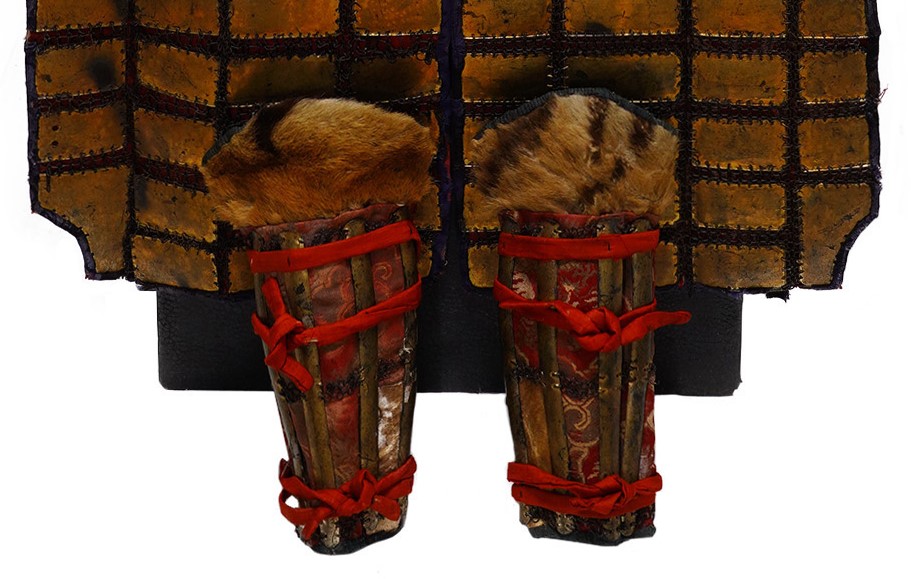
■Gattari (supporter): Sashimono holder
If you focus on the back of this armor, you will find that a square-shaped metal frame: Gattari (合当理), is attached. It is a gear that supports the upper part of a Sashimono (指物, a frag or decorative sign installed at the back of armor). And the Machiuke (待受) is the lower side metal fitting that supports a Sashimono. Samurai warriors judged their sides and enemies on the battlefields by checking the motifs that were designed for flags. Especially in group battles with infantry, this method was very effective because they could instantly identify affiliations.
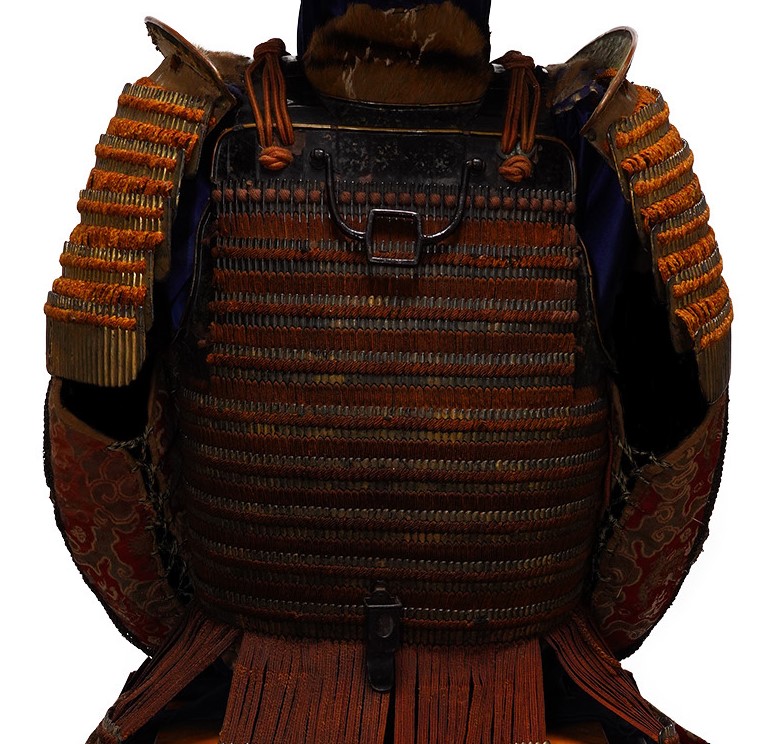
Certification: Tokubetsu Kicho Shiryo Certificate (No. 1967)
The cerificate was issued by The Association for the Research and Preservation of Japanese Helmets and Armor, which is the most trusted Japanese armor appraiser in Japan. Tokubetsu Kicho Shiryo means an especially precious cultural article. It is ranked as the third highest of five rankings.
This armor was authenticated on May 22nd 2022 as Tokubetsu Kicho Shiryo and the paper mentions the armor was made in the early Edo period.

An English translation of the certificate is available on request. We won’t charge any additional fee.
【About us】
Samurai Museum is located in Tokyo, Japan, exhibiting antique artifacts related to the Samurai history. Samurai Museum Shop is the place for those who are interested in Japanese culture and craftsmanship. We deal with antique Samurai swords/armor, traditional crafts made in Japan and so on.
【Payment method】
We accept payment through Stripe (Credit card), PayPal, Apple Pay or ChromePay, all of which are secure payment methods. Also, you don’t need to make an account on Stripe for the checkout. If you prefer other payment method, please contact us. You may either pay in JPY, USD, AUD, CAD, EUR, CHF or GBP. The price is set in Japanese Yen. Prices in other currencies are automatically calculated based on the latest exchange rate.

【Shipping duration】
We normally ship via EMS (Express Mail Service) provided by Japan Post. It usually takes at least 5-14 days to deliver the package after you place an order. We offer Free International Shipping as long as we can ship your order by EMS. If you prefer other shipping carriers, please contact us.
We will inform you of the order’s tracking number via email. Please make sure you fill out your valid email address correctly.
*Please keep in mind that due to the spread of COVID-19, there might be possible delays in delivery. If you like to make sure if EMS shipping is available to your country, please contact us.

【How to make sure the condition】
Please keep in mind that what you are going to purchase is an antique item. We uploaded high resolution photos for you to check its condition thoroughly. If you like to see more photos with different angles, please feel free to contact us. We will be happy to send them to you so that you can make informed decision. It is essential for us to know that you are happy with your choice of a sword. and we are prepared to use the best of our ability to serve you.
【How To Contact Us】
Please contact us through email, Facebook Messenger or Live Chat if you have any questions. You can find each icon on the right side of the website. Please click one of them to reach us. We will reply to you within 1-2 business days.
【How To Preserve Antique Samurai Armor】
Dryness, humidity, and bad ventilation might deteriorate the condition of antique Samurai armor. The best temperature to preserve Samurai armor is around 20℃ in Celsius, and humidity should be about 60%. Direct sunlight should be avoided. We recommend storing armors in a room with good ventilation. If you like to display them outside the boxes for a prolonged time, we suggest using a glass case in order for dust not to be accumulated easily. In case you don’t use a glass case, please make sure to regularly dust off from the armor by using a soft brush made of delicate cloth or brush for painting.
If you like to know more about the preservation of this armor, please feel free to contact us.
